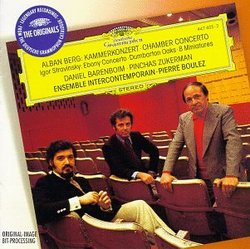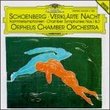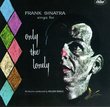| All Artists: Alban Berg, Igor Stravinsky, Pierre Boulez, Ensemble InterContemporain, Daniel Barenboim Title: Berg: Kammerkonzert; Stravinsky: Dumbarton Oaks / Boulez, Barenboim Members Wishing: 1 Total Copies: 0 Label: Deutsche Grammophon Release Date: 1/23/1996 Genre: Classical Styles: Chamber Music, Forms & Genres, Concertos, Instruments, Reeds & Winds Number of Discs: 1 SwapaCD Credits: 1 UPC: 028944740523 |
Search - Alban Berg, Igor Stravinsky, Pierre Boulez :: Berg: Kammerkonzert; Stravinsky: Dumbarton Oaks / Boulez, Barenboim
 | Alban Berg, Igor Stravinsky, Pierre Boulez Berg: Kammerkonzert; Stravinsky: Dumbarton Oaks / Boulez, Barenboim Genre: Classical
|
Larger Image |
CD DetailsSimilarly Requested CDs |
CD ReviewsThe best of Berg, ravishing Stravinsky selimt@isbank.net.tr | Ankara, Turkey | 05/11/2000 (5 out of 5 stars) "If you're one of those who, like me, find Berg a little bit too luscious, too late-19th-century-ish, this work will probably surprise and delight you. It is known as his most Schoenbergian work, which may be the reason why it is less known than for example the violin concerto, and which also accounts for the unusually lucid textures and relatively detached treatment of the wonderfully inspired musical material. The coolness of this masterpiece renders Berg's romanticism more impressive than in his other works, I think. It is also said to be based on various games with the number three, alluding to the trinitry of Second Viennese School. Stravinsky is as energetic, witty and masterful as we know him in the concerto and eight miniatures, each a masterpiece. Overall, a magnificient disk. Nobody interested in modern music should miss it." CACOPHONY FOR THE MASSES DAVID BRYSON | Glossop Derbyshire England | 08/23/2003 (5 out of 5 stars) "When the Rite of Spring was premiered shortly before WW1 there was a bad-mannered riot in the theatre. 90 years later Stravinsky does not seem much more radical than Brahms, and I was surprised to see that all 3 of the Stravinsky items here are later in date than Berg's Chamber Concerto. Assuming then that Stravinsky is a fully accepted classic these days, maybe I can use his comparative popularity to do my little bit towards 'popularising' Berg, or at least reducing the level of antipathy and indifference to him. In the last resort if you still find you can't put up with him, you will always have a very good set of Stravinsky performances at a very reasonable price.Persuading people to listen to Berg is not helped by supercilious remarks by Boulez that he is 'of course very romantic' or words to that effect. He is quite obviously not romantic in the way Strauss or Elgar are romantic, and I do not necessarily acquit Boulez of pseudism and affectation in talking like this. I guess that most people getting to know Berg start with the violin concerto which can, at a stretch, be called romantic in the familiar sense. For the chamber concerto this takes a bigger stretch, but I can still hear Brahms in it. What its idiom resembles is Schoenberg's two chamber symphonies, firmly across the 12-tone rubicon and full of the squawking effects that characterise the second Viennese school but not totally uncompromising like Schoenberg's concertos. In my diet I couldn't live indefinitely on 'nice' flavours, and in my musical diet, while I always tend to be a bit suspicious of fashionable cacophony, I couldn't take myself seriously as even an amateur musician if I were totally deaf to Berg and Schoenberg. If you like Stravinsky and buy this record you will not have wasted your money. If the Berg chamber concerto succeeds in interesting you in the second Viennese school, a good next step into that territory would be either his violin concerto (I recommend Perlman) or Schoenberg's chamber symphonies in the Holliger recording." Accompanying Notes Misleading George R. Lunney | Johns Island, SC | 07/10/2005 (5 out of 5 stars) "An impressive recording, but the notes accompanying the recording are not only misleading but downright erroneous. Stravinsky wrote Ebony Concerto for Woody Herman, not Benny Goodman. In fact, Woody Herman and the First Herd performed the world premier of Ebony Concerto at Carnegie Hall on March 25, 1946. A fragment of that first performance is avaiable on CD..."
|

 Track Listings (8) - Disc #1
Track Listings (8) - Disc #1
![Great Pianists of the 20th Century - Selections from the definitive collection [Sampler]](https://nationalbookswap.com/cd//m/90/0790/6070790.jpg)


